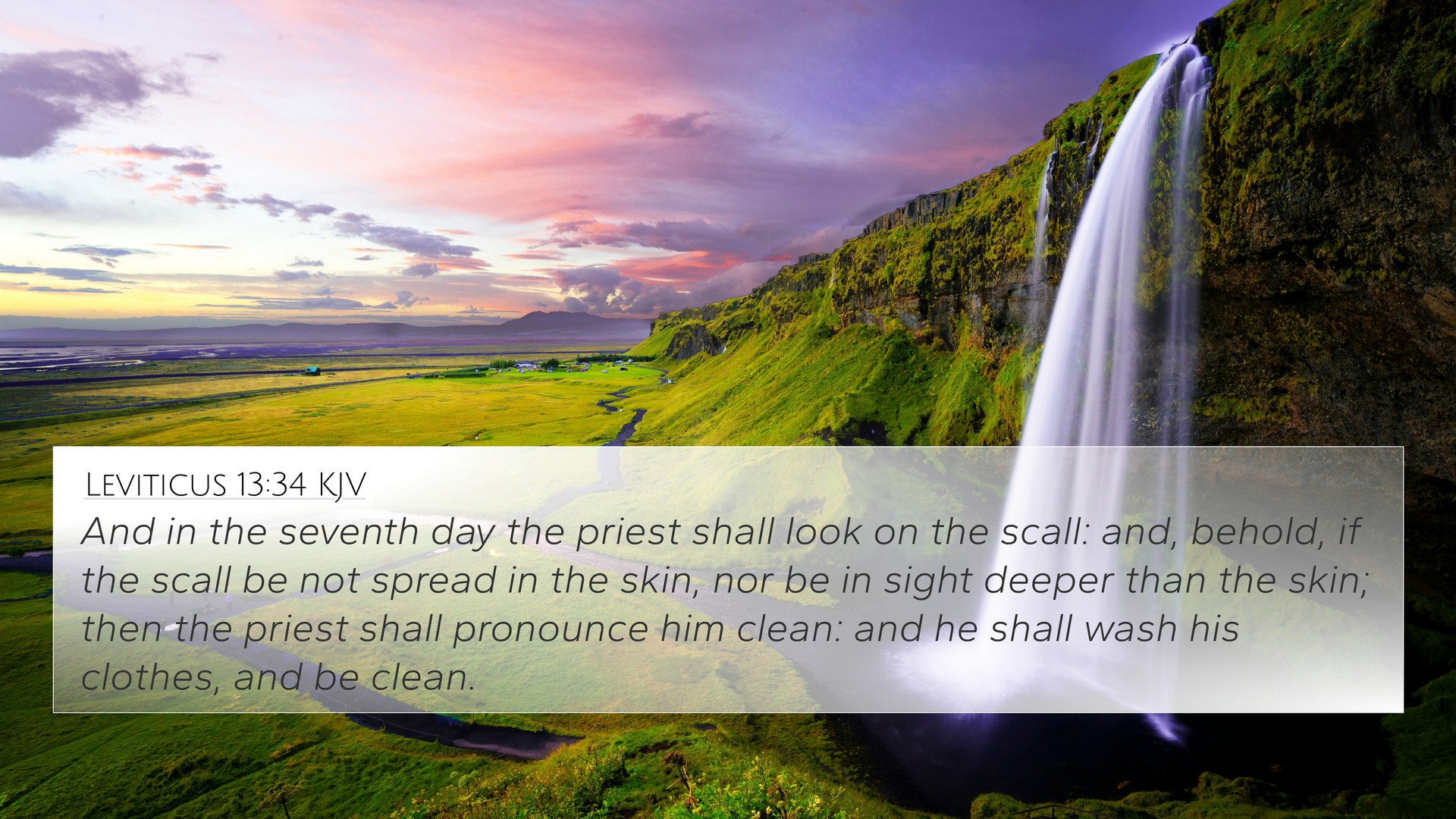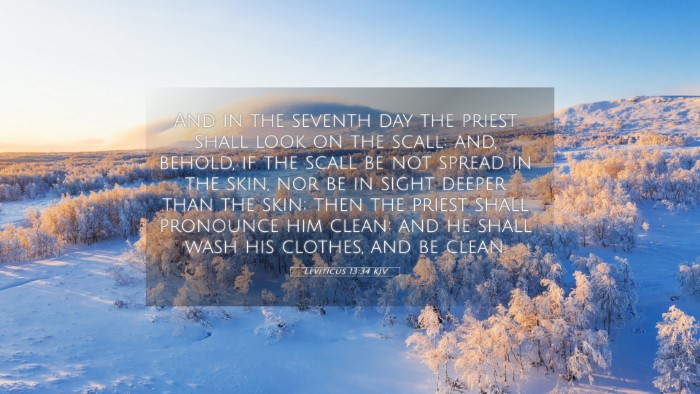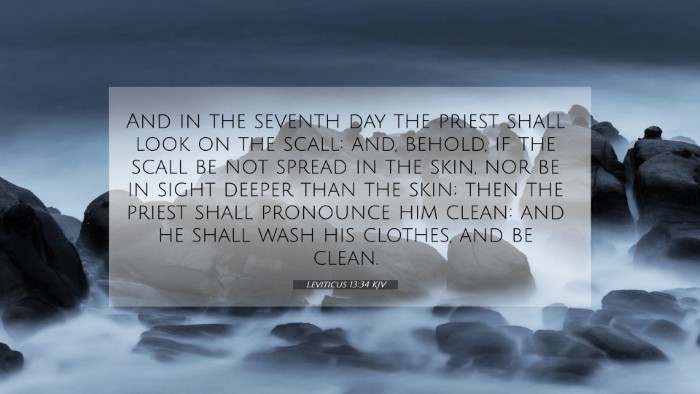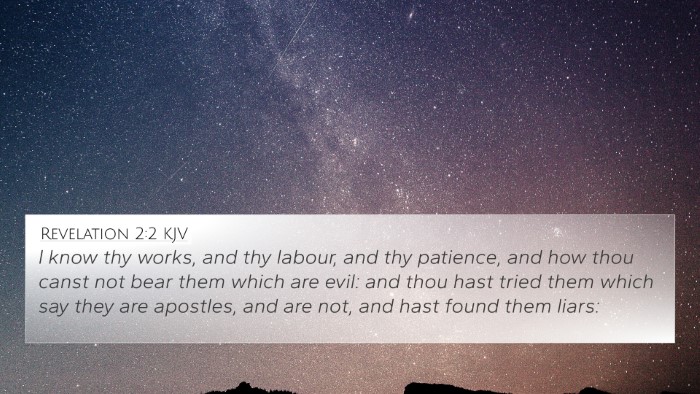Understanding Leviticus 13:34
Leviticus 13:34 states: "Then the priest shall look, and if the plague has indeed faded after the washing, then the priest shall pronounce him clean. And he shall wash his clothes, and be clean." This verse focuses on the context of examining skin diseases, particularly those that are of concern in ceremonial law.
Summary of Insights on Leviticus 13:34
This verse indicates the role of the priest in assessing the condition of an individual's skin affliction and the significance of the cleansing process. It underscores the details surrounding ceremonial cleanliness under the Mosaic Law and serves as a broader metaphor for spiritual purity.
Key Themes
- Ceremonial Law: Emphasizes the importance of maintenance of spiritual and physical cleanliness within the community.
- Priestly Authority: Highlights the role of the priest as a mediator between God and the people, entrusted with the task of declaring someone clean or unclean.
- Symbolism of Cleansing: The act of washing symbolizes purification, which can be seen as a foreshadowing of spiritual cleansing in the New Testament.
Comparative Bible Verse Analysis
When studying Leviticus 13:34, it is beneficial to examine related scriptures that reinforce its message of cleanliness and restoration. Below are some key cross-references:
- Exodus 30:20-21: Discusses the importance of purification in the context of approaching God.
- Leviticus 14:8-9: Describes the cleansing ritual for the leper, reinforcing the themes present in chapter 13.
- Numbers 19:17-19: Details purification rites using the ashes of a red heifer, connecting with the theme of cleanliness.
- Matthew 8:3: Represents Jesus' authority to declare someone clean, parallel to the Old Testament priest's role.
- Mark 1:41-42: Jesus’ healing of a leper illustrates the fulfillment of the Law and the priest's role.
- Hebrews 9:13-14: Highlights the concept of blood and cleansing, likening it to the spiritual cleansing provided through Christ.
- 1 John 1:7: Addresses the theme of walking in the light and being cleansed from all sins.
Tools for Cross-Referencing Bible Texts
To delve deeper into the connections between these verses and others, one might consider utilizing various tools for Bible cross-referencing:
- Bible Concordance: A useful resource for finding where themes and specific words appear throughout Scripture.
- Cross-Reference Bible Study Guides: These provide structured ways to examine how different verses relate to each other.
- Comprehensive Bible Study Material: Includes discussions and analyses of various themes and concepts across books of the Bible.
- Bible Chain References: A method of linking scriptures that relate on similar topics or messages.
Interpreting Biblical Themes Through Cross-References
Cross-referencing enhances our understanding of spiritual themes by identifying how passages dialogue with one another, revealing deeper meanings and nuances:
- Identifying Connections: Understanding the transition from the Old Testament Law to New Testament grace.
- Comparative Studies: Analyzing differences between various Gospel accounts and how they reflect the fulfillment of the Law.
- Thematic Exploration: Investigating how themes of cleanliness, healing, and restoration are recurrent throughout Scripture.
Conclusion
Leviticus 13:34 provides insight into the ceremonial laws concerning cleanliness and the roles within the community that ensure spiritual purity. By employing cross-references and analyses, readers can gain a broader understanding of how this ancient scripture informs the New Testament teachings and spiritual practices today.





